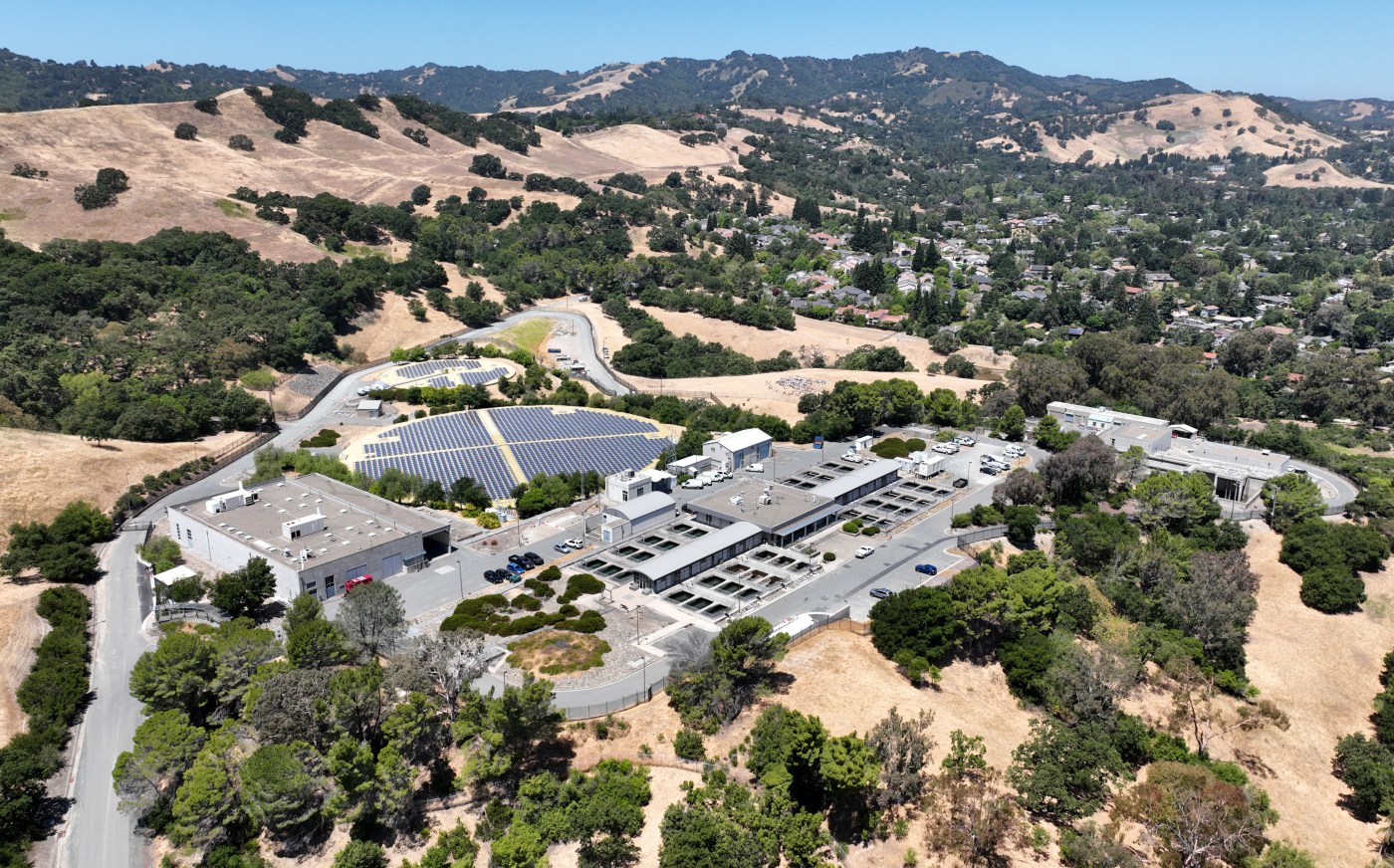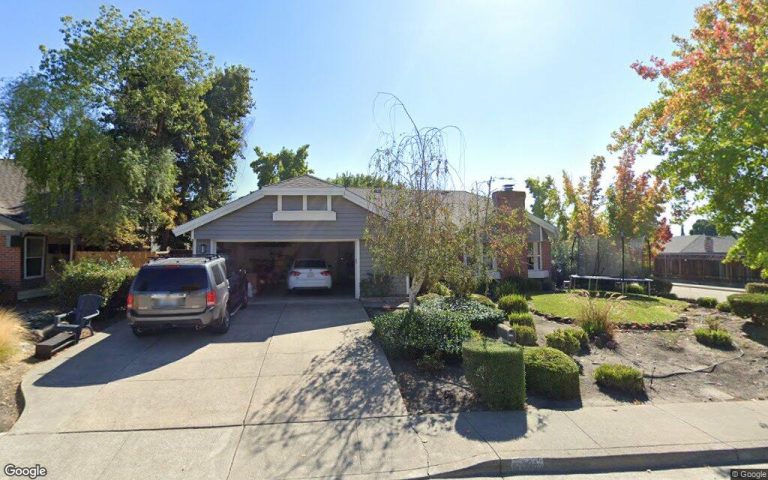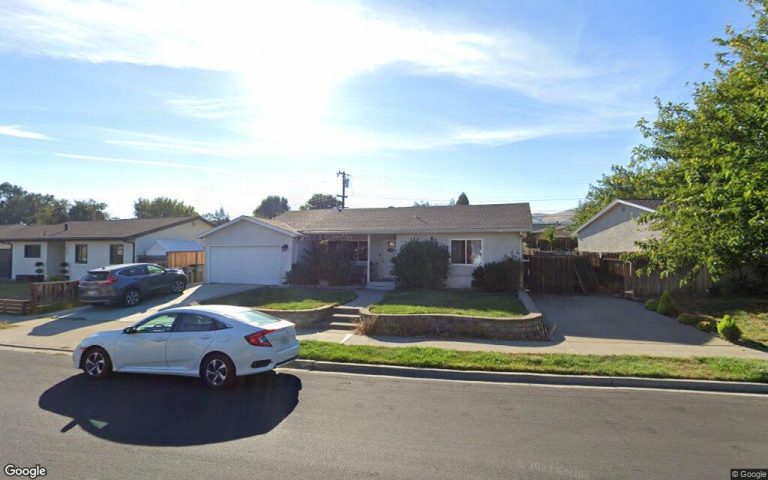WALNUT CREEK — As the Bay Area’s drinking water is increasingly clouded with particles from wildfires, atmospheric rivers, algae blooms and chemical contaminants, the East Bay’s largest water district is set to undertake the most ambitious infrastructure project in the region to try to keep it clean.
The East Bay Municipal Utility District (EBMUD) is tackling nearly $1 billion in infrastructure upgrades to help safeguard 1.4 million residents’ drinking water supply. Officials hope to transform the way it treats the Mokelumne River Watershed that feeds the Pardee and Briones reservoirs.
One of the biggest projects began in fall 2021, when the 101-year-old agency began conceptualizing a $420 million plan to add new pretreatment facilities at its Walnut Creek Water Treatment Plant — and smaller upgrades to the Lafayette plant nearby — to speed up how quickly EBMUD can filter out the dirt, microorganisms, algae, chemicals and other particles that are swept into drinking water, 90% of which is sourced from Sierra Nevada snowmelt.
Constructed in 1967, the Walnut Creek plant currently pumps out 115 million gallons per day (MGD). If the project gets the green light, that capacity is expected to jump to 160 MGD after both phases of construction are complete, according to staff reports.
The plant’s existing gravity filtration system — not dissimilar to a household Brita filter — processes water through layers of sand and charcoal to strain out sediment and organic matter, in addition to other chemical processes for aeration, fluoridation and corrosion control.
According to plans for new ozone oxidation treatments, ballasted flocculation processing and other pending pretreatment upgrades, EBMUD aims to improve the reliability, efficiency, and resiliency of the treatment process serving roughly 225,000 customers in Pleasant Hill, Walnut Creek, Alamo, Lafayette and surrounding communities in the San Ramon Valley.
Specifically during emergencies and drought, the project would also allow the Walnut Creek Water Treatment Plant to safely tap into supplemental, raw sources of water that don’t otherwise satisfy treatment standards, including the Sacramento River that flows south from the Freeport Regional Water Facility.
EBMUD’s seven-member board unanimously agreed to vote on approving the project’s final environmental impact reports (EIR) on July 9. Despite three years of outreach with local elected officials and residents, the decision on the final EIR was postponed to give staff four extra weeks to address neighbors’ lingering questions and concerns.
But the project is not without controversy.
Related Articles
SJ approves sanctioned encampment plan to move 500 homeless people away from waterways
Walters: California’s fights over water rights are at heart of supply issue
Sites Reservoir: Environmental groups file appeal to try to stop California’s largest new reservoir project in 50 years
CA Public Utilities Commission will decide if San Jose Water can increase its rates 11% in 2025
Bay Area water polo legend Maggie Steffens seeks fourth gold at Paris Olympics
Some residents living nearby in Acalanes Ridge opposed the project’s “industrialization” of their neighborhood. In a June 9 letter, they questioned the merits of the proposed location over other alternatives, as well as the potential impacts of truck traffic, air pollution, and noise on the community. The Walnut Creek plant does not sit on an active fault, but opponents said they fear that the treatment plant’s planned expansion will exacerbate risks during wildfires, earthquakes and evacuations.
While EBMUD planning staff dismissed these concerns, Andrea Pook, EBMUD spokesperson, said the district will continue to talk with residents closest to the plant — hopefully finding a path forward for the agency to be “a good neighbor.”
“People often take it for granted that they can just turn on their tap, without realizing what it takes to do that — it requires a lot of money, time and commitment,” Pook said.
Related Articles
SJ approves sanctioned encampment plan to move 500 homeless people away from waterways
Walters: California’s fights over water rights are at heart of supply issue
Sites Reservoir: Environmental groups file appeal to try to stop California’s largest new reservoir project in 50 years
CA Public Utilities Commission will decide if San Jose Water can increase its rates 11% in 2025
Bay Area water polo legend Maggie Steffens seeks fourth gold at Paris Olympics
During the June 11 board meeting, General Manager Clifford Chan said that planning staff will likely recommend approval of the project in July.
“When you look at our system, there are no other options,” Chan said Tuesday. “As much as we’d like to be creative or maybe there’s something magical out there, it just doesn’t exist.”
If the project’s EIR is certified next month, EBMUD staff said they will start a three-year design phase before construction is slated to begin in 2027.
Every day, EBMUD processes roughly 375 million gallons of drinking water across its six water treatment plants — spanning Oakland, Kensington, El Sobrante, Orinda, Lafayette and Walnut Creek.
A $267 million project is currently underway through 2027 at the 88-year-old Orinda plant — EBMUD’s highest-capacity site, which produces 1.84 billion glasses of treated water daily. The water agency also awarded a $237 million construction contract for work at its Upper San Leandro and Sobrante treatment plants last year.
The first phase of the total $420 million project at the Walnut Creek plant — slated to last through at least 2030 — is estimated to cost $315 million before another $105 million pays for the final phase, which does not yet have a definite timeline for completion but is anticipated to take two years.
Water agencies across the U.S. have known about the looming costs associated with maintaining access to safe drinking water.
In 2013, the U.S. Environmental Protection Agency (EPA) surveyed up to $384 billion in needed improvements for the nation’s drinking water infrastructure through 2030. The estimated cost of constructing, expanding, and rehabilitating infrastructure dedicated to reducing contamination was the second highest expense, tallying $72.5 billion.
EBMUD Director Luz Gómez, who represents Ward 2 where the Walnut Creek plant is located, said she supports the project’s aim to ensure access to clean, good tasting water.
“It’s quite a lot of information to absorb,” said Gómez during EMBUD’s June 11 board meeting, acknowledging that there’s still a few disagreements about the plan to iron out. “But the current system of treating water at Walnut Creek could get overwhelmed by the changing quality of our water, leading to potentially significant water restrictions for extended periods of time for over 220,000 people. Something needs to be done about this.”












